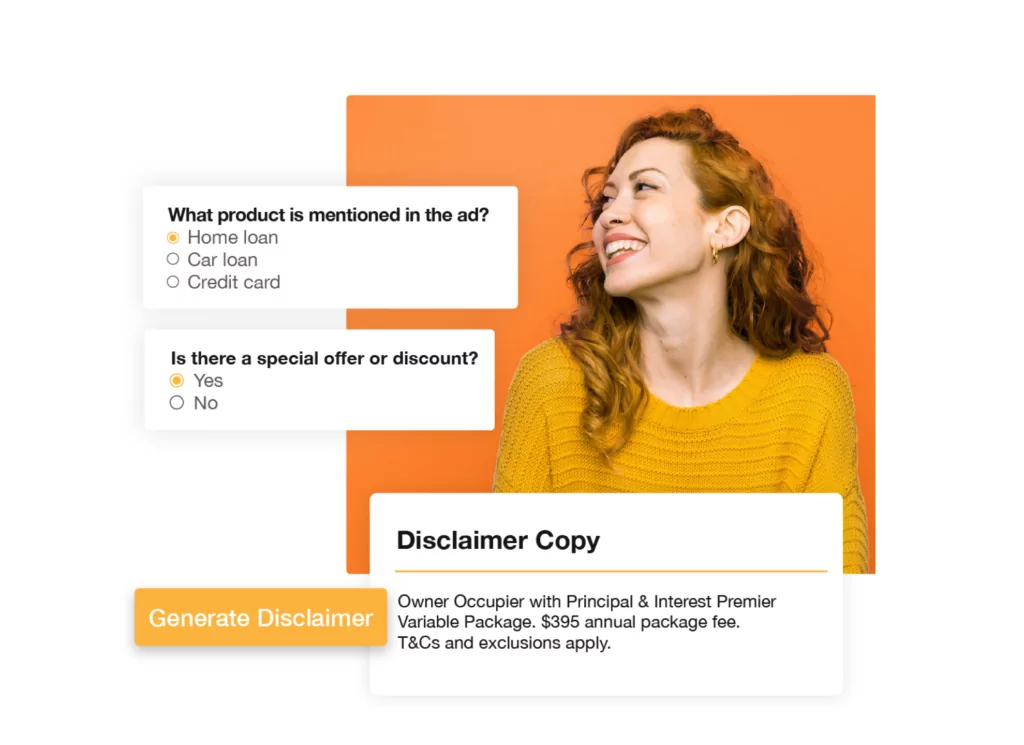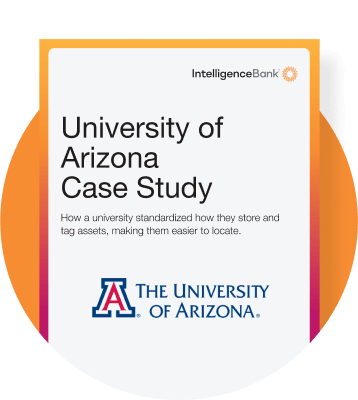Imagine this: 10 minutes until launch, and your team is in full creative overdrive — until somebody realizes the compliance team is yet to review the work. In an environment where one rogue image or unchecked phrase can send your campaign into freefall, every detail counts. Compliance is survival.
In this article, we get inside marketing workflows to show how having compliance practices integrated into your workflow brings a strategic advantage — over and above regulatory necessity, that is. Marketers face tight deadlines, dog-eat-dog competition, and an inherent risk of potential fouls in the legal firepits. By automating compliance reviews, you can streamline approvals and safeguard your creative output.
What Is Content Compliance?
In marketing, content compliance is the crash barrier that keeps brands on track — without a squad of regulators and legislators chasing every campaign. While compliance itself refers to the organizational processes that keep you playing by the rulebook, compliance within the marketing workflow can lead to inevitable halts. By checking that every piece of digital content follows industry regulations, copyright laws, and internal brand standards, companies can protect themselves from legal and reputational damage — and identity crises. Without it, even the most creative campaigns can misfire.
Regulatory compliance
Marketing isn’t just about creativity — it’s about responsible creativity. Industries like finance, healthcare, government agencies, and alcohol have strict regulatory standards. A skincare brand, for example, can’t claim a product is “clinically proven” without solid evidence — and non-compliance can lead to eye-watering fines or ad takedowns. Marketing teams who don’t want to deal with legal pyrotechnics embed automated compliance checks in their content approval workflows. That way, they can easily ensure messaging aligns with legal and industry standards before going live.

Copyright compliance
Using an image, video, or music track without proper rights can land brands in hot legal waters. As companies increasingly turn to generative AI to produce visual and written marketing collateral, we’ll likely see compliance in this space become even more complex and nuanced in the upcoming years. Remember when Vanilla Ice sampled Queen and David Bowie’s “Under Pressure” without permission? The settlement, which they reached outside of court, came down to a single note — even then, that mistake cost Vanilla Ice millions.
Copyright law gets granular, and copyright compliance ensures marketing teams have the correct licenses, credit creators, and avoid unintentional infringement. Digital asset management (DAM) tools can track digital content usage rights and expiration dates, preventing left-field legal headaches.

Compliance is rarely the best part of any marketer’s day. It’s strict, mostly un-fun, and can create major roadblocks in a campaign’s timeline. But it’s also a necessary evil that protects brand integrity while creativity flows.
Why Does Content Compliance Matter in Marketing?
Content compliance is a pillar in effective marketing. Without it, brands risk jeopardizing trust, facing legal backlash, and unleashing avoidable mayhem. By splicing compliance into marketing workflows, businesses can protect their reputation, fast-track operations, and remain competitive. Here’s how:
Building brand reputation and trust
Trust is hard to earn and easy to lose. A misleading claim, offensive ad, or copyright violation can unravel years of brand-building. Take Pepsi’s infamous ad featuring Kendall Jenner — meant to promote unity, it instead sparked backlash for trivializing social movements and was pulled after a day. If better compliance checks were in place, that drama could have been avoided. A structured marketing workflow ensures all content aligns with legal, ethical, and brand standards before it reaches the public.
Protecting your audience (and your brand)
Consumers expect brands to be responsible, whether it’s handling data privacy, ensuring accessibility, or avoiding deceptive messaging. For example, incorrect financial disclaimers can cost customers and companies millions of dollars, while misleading health claims can endanger lives and lead to lawsuits. Compliance checks prevent brands from making promises they can’t keep: It’s how we know marketing efforts genuinely serve and protect audiences.
Gaining a competitive edge
In a crowded market, brands that consistently meet compliance standards build consumer confidence. This is especially true in industries with heavy regulations. Incorporating compliance into marketing workflows is trending in digital marketing because it differentiates businesses. How? Brands can move faster while maintaining quality, getting ahead of competitors who struggle with last-minute legal fixes.
Improving operational efficiency
Repeatedly submitting work riddled with basic, recurring compliance errors is the bane of a content reviewer’s life. Time spent checking, reworking assets for common avoidable errors, is time that could be better spent on high-value production. A well-structured marketing workflow integrates compliance from the get-go, helping you automate and structure approvals. Think of it like an early and proactive quality control process that gears your workflow up for speed and efficiency.
Strengthening collaboration across departments
Legal, Compliance, and Marketing teams often have a love-hate relationship. Compliance requirements can barricade creativity, while Legal teams face time-bound pressures to approve assets and move campaigns out the door. While “compliance” might conjure imagery of checking off boxes on a clipboard, a structured workflow bridges the gap between teams, supporting each to perform their jobs more effectively (more on this below). And, the implications of ignoring compliance standards are serious.
What Are the Consequences of Non-Compliance?
Non-compliant marketing workflows can quickly spiral into setbacks for the marketing team and the entire company. When compliance isn’t woven into key stages of production and management, the aftermath can impact brand reputation, operational efficiency, and legal standing.
Consider these scenarios:
Reputational damage
- Public backlash: A campaign featuring unlicensed images or controversial claims can trigger legal retaliation and erode customer trust.
- Loss of credibility: Messaging that strays from your brand standards is confusing and diminishes perceived authority in your market.
Operational inefficiencies
- Delayed approvals: Content sent back for compliance revisions can arrest time-sensitive campaigns.
- Rework and waste: Repeated revisions are a no-win game: They delay launch dates and increase resource expenditure across teams.
Legal and financial risks
- Lawsuits and fines: Risky language, missing claims or unauthorized use of copyrighted material can lead to legal repercussions and regulatory fines.
- Contractual breaches: Failure to meet standards might also breach contractual obligations with partners or advertisers.
While these challenges underline the importance of strict adherence to compliance, it’s clear that the necessary checks are vital for protecting your brand and ensuring sustainable success. As every marketer knows, compliance checks can feel like handbrakes across the entire workflow. But there are ways to systematically interpolate them into your operations.
How To Incorporate Content Compliance into Your Marketing Workflows
With tight deadlines and constant pressure to deliver, it’s tempting to treat compliance as a mere checkbox at the end. However, integrating content compliance into your workflow as a part of the creative process can mitigate revisions early and make campaign after campaign flow more smoothly. Here’s how to do it:
How do you get started with content compliance in marketing workflows?
Begin with a strong foundation that aligns every creative output with your company’s standards. Then, layer compliance protocols into your process like so:
Establish brand guidelines: Define clear, comprehensive guidelines that encompass tone, visuals, and messaging to ensure brand consistency across all channels. But watch out for the PDF trap — an online brand portal gives a strategic edge, with streamlined access for all players, updates implemented in real-time, and self-service functionality. Plus, you can integrate it with your DAM.
Develop approval processes: Create structured workflows with designated checkpoints for compliance reviews — before, during, and after content creation.
Implement automated compliance checks: Leverage technology to scan content for copyright, regulatory, and internal guideline adherence. Marketing compliance software is a simple way to achieve this, systematically saving time and reducing manual errors.
Regular audits and monitoring: Schedule periodic audits to assess compliance levels and refine processes, ensuring the system evolves alongside challenges and regulations.
Content compliance for specific marketing operations
While working into one unified workflow, we overview how compliance is handled across various content creation points.
Ad production: Copywriting, video, audio and image creation: DAM tools ensure all imagery adheres to brand identity and licensing agreements before they go live. Rich metadata and tagging enables teams to record details of usage contracts and expiries.
Social media and email campaign creation: Build compliance checkpoints into your email marketing software to verify that all content meets regulatory guidelines.
Live digital ads: Embed real-time ad compliance tools that alert teams to deviations from approved messaging during live campaigns.
Content and collateral tracking: Evergreen content should stay relevant forever, right? But in reality, that’s not always the case. Content and collateral tracking sends automatic alerts when content reviews are due, tracking feedback, markup, and approvals, while keeping records of previous versions for easy reference.
By embedding these processes early as a part of systematic content workflow, you transform compliance from a reactive task into a proactive strategy. As marketing production continues to accelerate, automated compliance software is a tool that blends compliance into every touchpoint in your marketing workflow.

How Can Compliance Software Help Streamline Marketing Workflows?
Marketing compliance expands beyond what’s “legally right vs. wrong.” The right software supports a multitude of compliance tasks across different marketing workflows. IntelligenceBank’s marketing compliance workflow solutions integrate compliance into every aspect of your creative process to ultimately reduce risk and boost efficiency. Here’s a structured breakdown:
Centralizing approvals and content tracking
With unified dashboards, teams can manage all assets — from copy to design — in one central platform. That way, each piece of content routes through a pre-determined approval pathway before publication. Because the software automatically feeds content to the right team member, there’s no need for a manual follow-up decluttering workflow communications. It also upholds a transparent, traceable process by documenting all revisions and approvals.
AI-powered compliance checks
AI can monitor content production in real time, scanning for high-risk language, incorrect dates and disclaimers, and other potential issues. Analyzing copy and design elements against brand standards creates a lighter approval workload down the line. Plus, immediate notification when collateral deviates from legal or brand guidelines prevents workflow bottlenecks by flagging errors early.
Templated terms and conditions
Build customized templates and standardized legal frameworks to apply across all marketing assets, ensuring consistency in messaging and legal language — regardless of the channel. Quickly modifying templates to reflect evolving regulatory requirements reduces repetitive work and keeps all campaigns in tune with the same baseline standards.
Disclaimer generators
Leverage regulatory flexibility by automatically generating disclaimers that adapt based on audience, location, or industry specifics. You can tailor terms and conditions to meet variegated legal requirements across different jurisdictions and provide clear messaging that protects your brand and consumers.

What Else Should You Know About Marketing Compliance Content?
Want to shed more light on marketing compliance and its role in marketing workflows? These insights cover the fundamentals as well as practical strategies and trends.
Is marketing compliance software the same as other marketing content software?
No — marketing compliance software has distinct functions. It focuses on monitoring, approving, and ensuring all content adheres to legal and internal guidelines. Content briefing software, on the other hand, primarily assists with planning and creating content, without the specific layer of compliance checks. While many modern tools incorporate both features, the core functionalities of each remain distinct.
What are the best ways to monitor compliance over time?
To monitor compliance over time, there are three things you must do:
- Automated tracking: Leverage software to continuously monitor regulations, terms, and content quality.
- Regular audits: Schedule periodic reviews and update compliance guidelines to stay current.
- Analytics and reporting: Use reports to identify trends, recurring issues, and opportunities for workflow improvement.
How does automated compliance software reduce manual errors?
AI-powered compliance software scans in real time for high-risk words, expired licenses, or outdated terms. This minimizes human oversight. Furthermore, centralized dashboards streamline access, tracking, and approval for all teams involved.
What industries benefit most from marketing compliance?
Industries with high regulation, such as healthcare, finance, and the agri-food sector see a high-level impact. Although the benefits are not limited to these spaces. Any industry that values brand integrity and operational efficiency can gain a competitive edge.
What’s the ROI of Implementing Compliance Software?
Marketing compliance workflow software mitigates broad compliance challenges. Brands can reap returns such as:
- Cost savings, reducing the potential for legal disputes and fines.
- Workflow efficiency gains, with streamlined approvals and error reduction translating to faster time-to-market.
- Brand trust, where consistent, compliant content builds long-term customer loyalty.
Want To Manage Compliance Content More Efficiently?
In marketing, one misstep can carry hefty consequences for your brand. With compliance baked into your workflow, you can transform risk into a strategic asset — saving time, streamlining processes, and boosting collaboration.
IntelligenceBank’s compliance tools empower Marketing and Compliance teams to work as one cohesive unit, keeping content on point, deadlines on target, and brands intact. Ready to turn compliance from a roadblock into your competitive advantage? We’d love to show you how. Contact us to find out more.




